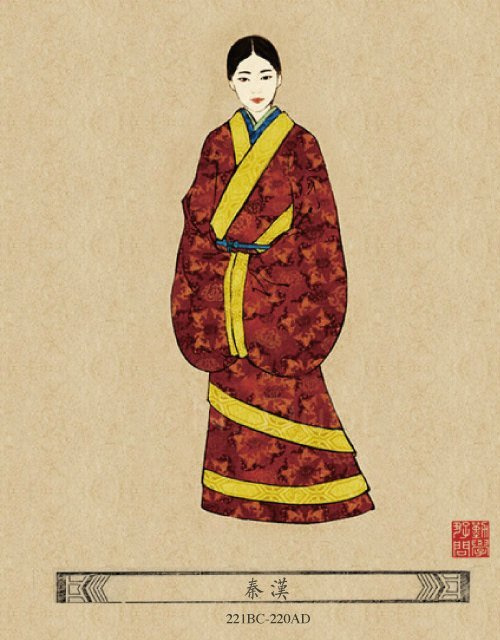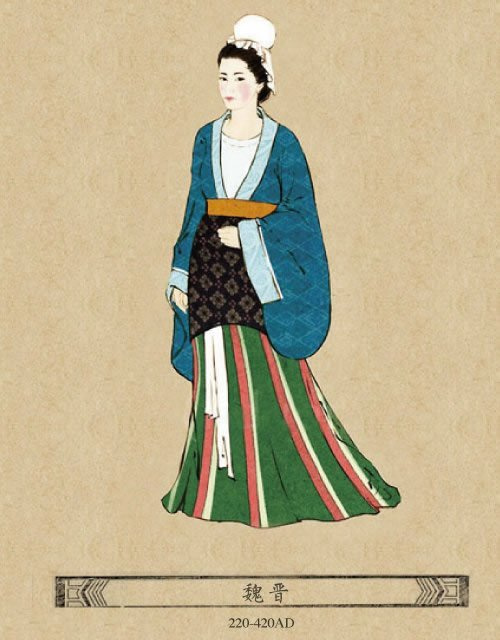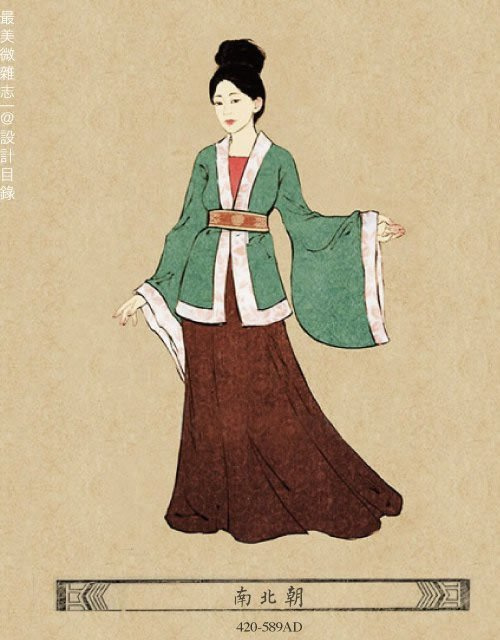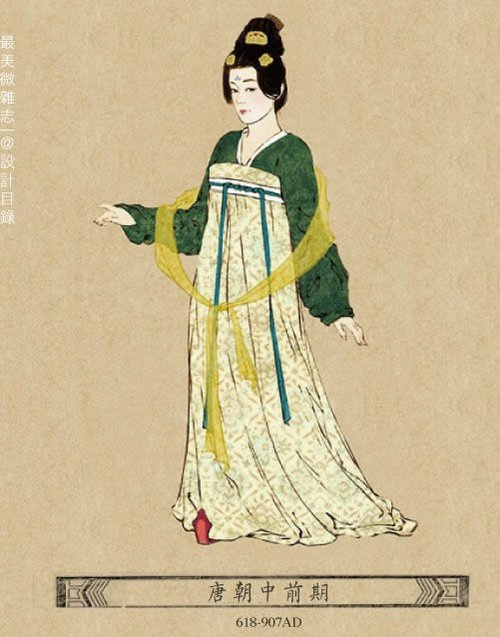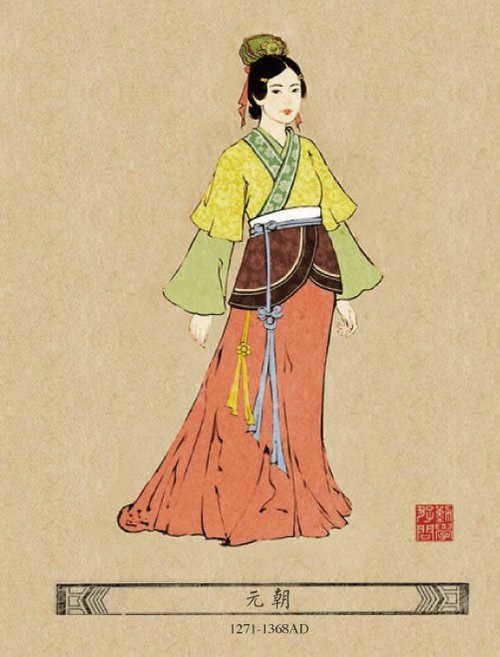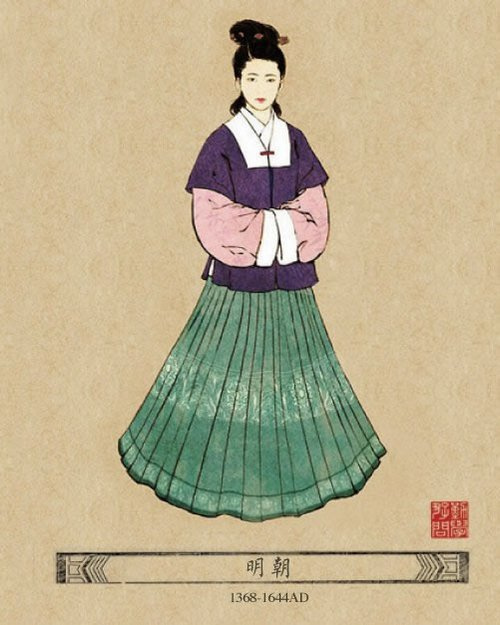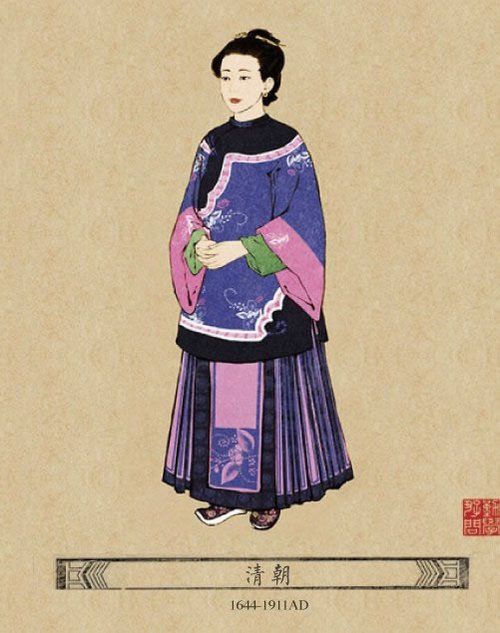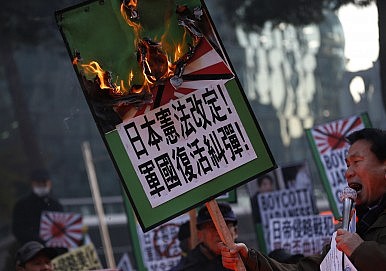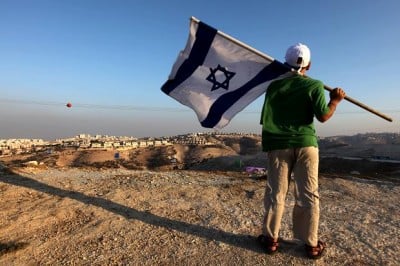http://www.globalresearch.ca/greater-israel-the-zionist-plan-for-the-middle-east/5324815
from
Oded Yinon's
"A Strategy for Israel in the Nineteen Eighties"
Published by the
Association of Arab-American University Graduates, Inc.
Belmont, Massachusetts, 1982
Special Document No. 1 (ISBN 0-937694-56-8)
Table of Contents
Publisher's Note1
The Association of Arab-American University Graduates finds it compelling to inaugurate its new publication series, Special Documents, with Oded Yinon's article which appeared in Kivunim (Directions), the journal of the Department of Information of the World Zionist Organization. Oded Yinon is an Israeli journalist and was formerly attached to the Foreign Ministry of Israel. To our knowledge, this document is the most explicit, detailed and unambiguous statement to date of the Zionist strategy in the Middle East. Furthermore, it stands as an accurate representation of the "vision" for the entire Middle East of the presently ruling Zionist regime of Begin, Sharon and Eitan. Its importance, hence, lies not in its historical value but in the nightmare which it presents.
2
The plan operates on two essential premises. To survive, Israel must 1) become an imperial regional power, and 2) must effect the division of the whole area into small states by the dissolution of all existing Arab states. Small here will depend on the ethnic or sectarian composition of each state. Consequently, the Zionist hope is that sectarian-based states become Israel's satellites and, ironically, its source of moral legitimation.
3
This is not a new idea, nor does it surface for the first time in Zionist strategic thinking. Indeed, fragmenting all Arab states into smaller units has been a recurrent theme. This theme has been documented on a very modest scale in the AAUG publication, Israel's Sacred Terrorism (1980), by Livia Rokach. Based on the memoirs of Moshe Sharett, former Prime Minister of Israel, Rokach's study documents, in convincing detail, the Zionist plan as it applies to Lebanon and as it was prepared in the mid-fifties.
4
The first massive Israeli invasion of Lebanon in 1978 bore this plan out to the minutest detail. The second and more barbaric and encompassing Israeli invasion of Lebanon on June 6, 1982, aims to effect certain parts of this plan which hopes to see not only Lebanon, but Syria and Jordan as well, in fragments. This ought to make mockery of Israeli public claims regarding their desire for a strong and independent Lebanese central government. More accurately, they want a Lebanese central government that sanctions their regional imperialist designs by signing a peace treaty with them. They also seek acquiescence in their designs by the Syrian, Iraqi, Jordanian and other Arab governments as well as by the Palestinian people. What they want and what they are planning for is not an Arab world, but a world of Arab fragments that is ready to succumb to Israeli hegemony. Hence, Oded Yinon in his essay, "A Strategy for Israel in the 1980′s," talks about "far-reaching opportunities for the first time since 1967″ that are created by the "very stormy situation [that] surrounds Israel."
5
The Zionist policy of displacing the Palestinians from Palestine is very much an active policy, but is pursued more forcefully in times of conflict, such as in the 1947-1948 war and in the 1967 war. An appendix entitled "Israel Talks of a New Exodus" is included in this publication to demonstrate past Zionist dispersals of Palestinians from their homeland and to show, besides the main Zionist document we present, other Zionist planning for the de-Palestinization of Palestine.
6
It is clear from the Kivunim document, published in February, 1982, that the "far-reaching opportunities" of which Zionist strategists have been thinking are the same "opportunities" of which they are trying to convince the world and which they claim were generated by their June, 1982 invasion. It is also clear that the Palestinians were never the sole target of Zionist plans, but the priority target since their viable and independent presence as a people negates the essence of the Zionist state. Every Arab state, however, especially those with cohesive and clear nationalist directions, is a real target sooner or later.
7
Contrasted with the detailed and unambiguous Zionist strategy elucidated in this document, Arab and Palestinian strategy, unfortunately, suffers from ambiguity and incoherence. There is no indication that Arab strategists have internalized the Zionist plan in its full ramifications. Instead, they react with incredulity and shock whenever a new stage of it unfolds. This is apparent in Arab reaction, albeit muted, to the Israeli siege of Beirut. The sad fact is that as long as the Zionist strategy for the Middle East is not taken seriously Arab reaction to any future siege of other Arab capitals will be the same.
Khalil Nakhleh
July 23, 1982
Foreward
by Israel Shahak
1
The following essay represents, in my opinion, the accurate and detailed plan of the present Zionist regime (of Sharon and Eitan) for the Middle East which is based on the division of the whole area into small states, and the dissolution of all the existing Arab states. I will comment on the military aspect of this plan in a concluding note. Here I want to draw the attention of the readers to several important points:
2
1. The idea that all the Arab states should be broken down, by Israel, into small units, occurs again and again in Israeli strategic thinking. For example, Ze'ev Schiff, the military correspondent ofHa'aretz (and probably the most knowledgeable in Israel, on this topic) writes about the "best" that can happen for Israeli interests in Iraq: "The dissolution of Iraq into a Shi'ite state, a Sunni state and the separation of the Kurdish part" (Ha'aretz 6/2/1982). Actually, this aspect of the plan is very old.
3
2. The strong connection with Neo-Conservative thought in the USA is very prominent, especially in the author's notes. But, while lip service is paid to the idea of the "defense of the West" from Soviet power, the real aim of the author, and of the present Israeli establishment is clear: To make an Imperial Israel into a world power. In other words, the aim of Sharon is to deceive the Americans after he has deceived all the rest.
4
3. It is obvious that much of the relevant data, both in the notes and in the text, is garbled or omitted,such as the financial help of the U.S. to Israel. Much of it is pure fantasy. But, the plan is not to beregarded as not influential, or as not capable of realization for a short time. The plan follows faithfullythe geopolitical ideas current in Germany of 1890-1933, which were swallowed whole by Hitler and the Nazi movement, and determined their aims for East Europe. Those aims, especially the division of the existing states, were carried out in 1939-1941, and only an alliance on the global scale prevented their consolidation for a period of time.
5
The notes by the author follow the text. To avoid confusion, I did not add any notes of my own, but have put the substance of them into this foreward and the conclusion at the end. I have, however, emphasized some portions of the text.
Israel Shahak
June 13, 1982
A Strategy for Israel in the Nineteen Eighties
by Oded Yinon
This essay originally appeared in Hebrew in KIVUNIM (Directions), A Journal for Judaism and Zionism; Issue No, 14–Winter, 5742, February 1982, Editor: Yoram Beck. Editorial Committee: Eli Eyal, Yoram Beck, Amnon Hadari, Yohanan Manor, Elieser Schweid. Published by the Department of Publicity/The World Zionist Organization, Jerusalem.
1
At the outset of the nineteen eighties the State of Israel is in need of a new perspective as to its place, its aims and national targets, at home and abroad. This need has become even more vital due to a number of central processes which the country, the region and the world are undergoing. We are living today in the early stages of a new epoch in human history which is not at all similar to its predecessor, and its characteristics are totally different from what we have hitherto known. That is why we need an understanding of the central processes which typify this historical epoch on the one hand, and on the other hand we need a world outlook and an operational strategy in accordance with the new conditions. The existence, prosperity and steadfastness of the Jewish state will depend upon its ability to adopt a new framework for its domestic and foreign affairs.
2
This epoch is characterized by several traits which we can already diagnose, and which symbolize a genuine revolution in our present lifestyle. The dominant process is the breakdown of the rationalist, humanist outlook as the major cornerstone supporting the life and achievements of Western civilization since the Renaissance. The political, social and economic views which have emanated from this foundation have been based on several "truths" which are presently disappearing–for example, the view that man as an individual is the center of the universe and everything exists in order to fulfill his basic material needs. This position is being invalidated in the present when it has become clear that the amount of resources in the cosmos does not meet Man's requirements, his economic needs or his demographic constraints. In a world in which there are four billion human beings and economic and energy resources which do not grow proportionally to meet the needs of mankind, it is unrealistic to expect to fulfill the main requirement of Western Society, 1 i.e., the wish and aspiration for boundless consumption. The view that ethics plays no part in determining the direction Man takes, but rather his material needs do–that view is becoming prevalent today as we see a world in which nearly all values are disappearing. We are losing the ability to assess the simplest things, especially when they concern the simple question of what is Good and what is Evil.
3
The vision of man's limitless aspirations and abilities shrinks in the face of the sad facts of life, when we witness the break-up of world order around us. The view which promises liberty and freedom to mankind seems absurd in light of the sad fact that three fourths of the human race lives under totalitarian regimes. The views concerning equality and social justice have been transformed by socialism and especially by Communism into a laughing stock. There is no argument as to the truth of these two ideas, but it is clear that they have not been put into practice properly and the majority of mankind has lost the liberty, the freedom and the opportunity for equality and justice. In this nuclear world in which we are (still) living in relative peace for thirty years, the concept of peace and coexistence among nations has no meaning when a superpower like the USSR holds a military and political doctrine of the sort it has: that not only is a nuclear war possible and necessary in order to achieve the ends of Marxism, but that it is possible to survive after it, not to speak of the fact that one can be victorious in it.2
4
The essential concepts of human society, especially those of the West, are undergoing a change due to political, military and economic transformations. Thus, the nuclear and conventional might of the USSR has transformed the epoch that has just ended into the last respite before the great saga that will demolish a large part of our world in a multi-dimensional global war, in comparison with which the past world wars will have been mere child's play. The power of nuclear as well as of conventional weapons, their quantity, their precision and quality will turn most of our world upside down within a few years, and we must align ourselves so as to face that in Israel. That is, then, the main threat to our existence and that of the Western world. 3 The war over resources in the world, the Arab monopoly on oil, and the need of the West to import most of its raw materials from the Third World, are transforming the world we know, given that one of the major aims of the USSR is to defeat the West by gaining control over the gigantic resources in the Persian Gulf and in the southern part of Africa, in which the majority of world minerals are located. We can imagine the dimensions of the global confrontation which will face us in the future.
5
The Gorshkov doctrine calls for Soviet control of the oceans and mineral rich areas of the Third World. That together with the present Soviet nuclear doctrine which holds that it is possible to manage, win and survive a nuclear war, in the course of which the West's military might well be destroyed and its inhabitants made slaves in the service of Marxism-Leninism, is the main danger to world peace and to our own existence. Since 1967, the Soviets have transformed Clausewitz' dictum into "War is the continuation of policy in nuclear means," and made it the motto which guides all their policies. Already today they are busy carrying out their aims in our region and throughout the world, and the need to face them becomes the major element in our country's security policy and of course that of the rest of the Free World. That is our major foreign challenge.4
6
The Arab Moslem world, therefore, is not the major strategic problem which we shall face in the Eighties, despite the fact that it carries the main threat against Israel, due to its growing military might. This world, with its ethnic minorities, its factions and internal crises, which is astonishingly self-destructive, as we can see in Lebanon, in non-Arab Iran and now also in Syria, is unable to deal successfully with its fundamental problems and does not therefore constitute a real threat against the State of Israel in the long run, but only in the short run where its immediate military power has great import. In the long run, this world will be unable to exist within its present framework in the areas around us without having to go through genuine revolutionary changes. The Moslem Arab World is built like a temporary house of cards put together by foreigners (France and Britain in the Nineteen Twenties), without the wishes and desires of the inhabitants having been taken into account. It was arbitrarily divided into 19 states, all made of combinations of minorites and ethnic groups which are hostile to one another, so that every Arab Moslem state nowadays faces ethnic social destruction from within, and in some a civil war is already raging. 5 Most of the Arabs, 118 million out of 170 million, live in Africa, mostly in Egypt (45 million today).
7
Apart from Egypt, all the Maghreb states are made up of a mixture of Arabs and non-Arab Berbers. In Algeria there is already a civil war raging in the Kabile mountains between the two nations in the country. Morocco and Algeria are at war with each other over Spanish Sahara, in addition to the internal struggle in each of them. Militant Islam endangers the integrity of Tunisia and Qaddafi organizes wars which are destructive from the Arab point of view, from a country which is sparsely populated and which cannot become a powerful nation. That is why he has been attempting unifications in the past with states that are more genuine, like Egypt and Syria. Sudan, the most torn apart state in the Arab Moslem world today is built upon four groups hostile to each other, an Arab Moslem Sunni minority which rules over a majority of non-Arab Africans, Pagans, and Christians. In Egypt there is a Sunni Moslem majority facing a large minority of Christians which is dominant in upper Egypt: some 7 million of them, so that even Sadat, in his speech on May 8, expressed the fear that they will want a state of their own, something like a "second" Christian Lebanon in Egypt.
8
All the Arab States east of Israel are torn apart, broken up and riddled with inner conflict even more than those of the Maghreb. Syria is fundamentally no different from Lebanon except in the strong military regime which rules it. But the real civil war taking place nowadays between the Sunni majority and the Shi'ite Alawi ruling minority (a mere 12% of the population) testifies to the severity of the domestic trouble.
9
Iraq is, once again, no different in essence from its neighbors, although its majority is Shi'ite and the ruling minority Sunni. Sixty-five percent of the population has no say in politics, in which an elite of 20 percent holds the power. In addition there is a large Kurdish minority in the north, and if it weren't for the strength of the ruling regime, the army and the oil revenues, Iraq's future state would be no different than that of Lebanon in the past or of Syria today. The seeds of inner conflict and civil war are apparent today already, especially after the rise of Khomeini to power in Iran, a leader whom the Shi'ites in Iraq view as their natural leader.
10
All the Gulf principalities and Saudi Arabia are built upon a delicate house of sand in which there is only oil. In Kuwait, the Kuwaitis constitute only a quarter of the population. In Bahrain, the Shi'ites are the majority but are deprived of power. In the UAE, Shi'ites are once again the majority but the Sunnis are in power. The same is true of Oman and North Yemen. Even in the Marxist South Yemen there is a sizable Shi'ite minority. In Saudi Arabia half the population is foreign, Egyptian and Yemenite, but a Saudi minority holds power.
11
Jordan is in reality Palestinian, ruled by a Trans-Jordanian Bedouin minority, but most of the army and certainly the bureaucracy is now Palestinian. As a matter of fact Amman is as Palestinian as Nablus. All of these countries have powerful armies, relatively speaking. But there is a problem there too. The Syrian army today is mostly Sunni with an Alawi officer corps, the Iraqi army Shi'ite with Sunni commanders. This has great significance in the long run, and that is why it will not be possible to retain the loyalty of the army for a long time except where it comes to the only common denominator: The hostility towards Israel, and today even that is insufficient.
12
Alongside the Arabs, split as they are, the other Moslem states share a similar predicament. Half of Iran's population is comprised of a Persian speaking group and the other half of an ethnically Turkish group. Turkey's population comprises a Turkish Sunni Moslem majority, some 50%, and two large minorities, 12 million Shi'ite Alawis and 6 million Sunni Kurds. In Afghanistan there are 5 million
Shi'ites who constitute one third of the population. In Sunni Pakistan there are 15 million Shi'ites who endanger the existence of that state.
13
This national ethnic minority picture extending from Morocco to India and from Somalia to Turkey points to the absence of stability and a rapid degeneration in the entire region. When this picture is added to the economic one, we see how the entire region is built like a house of cards, unable to withstand its severe problems.
14
In this giant and fractured world there are a few wealthy groups and a huge mass of poor people. Most of the Arabs have an average yearly income of 300 dollars. That is the situation in Egypt, in most of the Maghreb countries except for Libya, and in Iraq. Lebanon is torn apart and its economy is falling to pieces. It is a state in which there is no centralized power, but only 5 de facto sovereign authorities (Christian in the north, supported by the Syrians and under the rule of the Franjieh clan, in the East an area of direct Syrian conquest, in the center a Phalangist controlled Christian enclave, in the south and up to the Litani river a mostly Palestinian region controlled by the PLO and Major Haddad's state of Christians and half a million Shi'ites). Syria is in an even graver situation and even the assistance she will obtain in the future after the unification with Libya will not be sufficient for dealing with the basic problems of existence and the maintenance of a large army. Egypt is in the worst situation: Millions are on the verge of hunger, half the labor force is unemployed, and housing is scarce in this most densely populated area of the world. Except for the army, there is not a single department operating efficiently and the state is in a permanent state of bankruptcy and depends entirely on American foreign assistance granted since the peace.6
15
In the Gulf states, Saudi Arabia, Libya and Egypt there is the largest accumulation of money and oil in the world, but those enjoying it are tiny elites who lack a wide base of support and self-confidence, something that no army can guarantee. 7 The Saudi army with all its equipment cannot defend the regime from real dangers at home or abroad, and what took place in Mecca in 1980 is only an example. A sad and very stormy situation surrounds Israel and creates challenges for it, problems, risks but also far-reaching opportunities for the first time since 1967. Chances are that opportunities missed at that time will become achievable in the Eighties to an extent and along dimensions which we cannot even imagine today.
16
The "peace" policy and the return of territories, through a dependence upon the US, precludes the realization of the new option created for us. Since 1967, all the governments of Israel have tied our national aims down to narrow political needs, on the one hand, and on the other to destructive opinions at home which neutralized our capacities both at home and abroad. Failing to take steps towards the Arab population in the new territories, acquired in the course of a war forced upon us, is the major strategic error committed by Israel on the morning after the Six Day War. We could have saved ourselves all the bitter and dangerous conflict since then if we had given Jordan to the Palestinians who live west of the Jordan river. By doing that we would have neutralized the Palestinian problem which we nowadays face, and to which we have found solutions that are really no solutions at all, such as territorial compromise or autonomy which amount, in fact, to the same thing. 8 Today, we suddenly face immense opportunities for transforming the situation thoroughly and this we must do in the coming decade, otherwise we shall not survive as a state.
17
In the course of the Nineteen Eighties, the State of Israel will have to go through far-reaching changes in its political and economic regime domestically, along with radical changes in its foreign policy, in order to stand up to the global and regional challenges of this new epoch. The loss of the Suez Canal oil fields, of the immense potential of the oil, gas and other natural resources in the Sinai peninsula which is geomorphologically identical to the rich oil-producing countries in the region, will result in an energy drain in the near future and will destroy our domestic economy: one quarter of our present GNP as well as one third of the budget is used for the purchase of oil. 9 The search for raw materials in the Negev and on the coast will not, in the near future, serve to alter that state of affairs.
18
(Regaining) the Sinai peninsula with its present and potential resources is therefore a political prioritywhich is obstructed by the Camp David and the peace agreements. The fault for that lies of course with the present Israeli government and the governments which paved the road to the policy of territorial compromise, the Alignment governments since 1967. The Egyptians will not need to keep the peace treaty after the return of the Sinai, and they will do all they can to return to the fold of the Arab world and to the USSR in order to gain support and military assistance. American aid is guaranteed only for a short while, for the terms of the peace and the weakening of the U.S. both at home and abroad will bring about a reduction in aid. Without oil and the income from it, with the present enormous expenditure, we will not be able to get through 1982 under the present conditionsand we will have to act in order to return the situation to the status quo which existed in Sinai prior to Sadat's visit and the mistaken peace agreement signed with him in March 1979. 10
19
Israel has two major routes through which to realize this purpose, one direct and the other indirect. The direct option is the less realistic one because of the nature of the regime and government in Israel as well as the wisdom of Sadat who obtained our withdrawal from Sinai, which was, next to the war of 1973, his major achievement since he took power. Israel will not unilaterally break the treaty, neither today, nor in 1982, unless it is very hard pressed economically and politically and Egypt provides Israel with the excuse to take the Sinai back into our hands for the fourth time in our short history. What is left therefore, is the indirect option. The economic situation in Egypt, the nature of the regime and its pan-
Arab policy, will bring about a situation after April 1982 in which Israel will be forced to act directly or indirectly in order to regain control over Sinai as a strategic, economic and energy reserve for the long run. Egypt does not constitute a military strategic problem due to its internal conflicts and it could be driven back to the post 1967 war situation in no more than one day. 11
20
The myth of Egypt as the strong leader of the Arab World was demolished back in 1956 and definitely did not survive 1967, but our policy, as in the return of the Sinai, served to turn the myth into "fact." In reality, however, Egypt's power in proportion both to Israel alone and to the rest of the Arab World has gone down about 50 percent since 1967. Egypt is no longer the leading political power in the Arab World and is economically on the verge of a crisis. Without foreign assistance the crisis will come tomorrow. 12 In the short run, due to the return of the Sinai, Egypt will gain several advantages at our expense, but only in the short run until 1982, and that will not change the balance of power to its benefit, and will possibly bring about its downfall. Egypt, in its present domestic political picture, is already a corpse, all the more so if we take into account the growing Moslem-Christian rift. BreakingEgypt down territorially into distinct geographical regions is the political aim of Israel in the Nineteen Eighties on its Western front.
21
Egypt is divided and torn apart into many foci of authority. If Egypt falls apart, countries like Libya, Sudan or even the more distant states will not continue to exist in their present form and will join thedownfall and dissolution of Egypt. The vision of a Christian Coptic State in Upper Egypt alongside a number of weak states with very localized power and without a centralized government as to date, is the key to a historical development which was only set back by the peace agreement but which seems inevitable in the long run. 13
22
The Western front, which on the surface appears more problematic, is in fact less complicated than the Eastern front, in which most of the events that make the headlines have been taking place recently. Lebanon's total dissolution into five provinces serves as a precendent for the entire Arab world including Egypt, Syria, Iraq and the Arabian peninsula and is already following that track. The dissolution of Syria and Iraq later on into ethnically or religiously unqiue areas such as in Lebanon, is Israel's primary target on the Eastern front in the long run, while the dissolution of the military power of those states serves as the primary short term target. Syria will fall apart, in accordance with its ethnic and religious structure, into several states such as in present day Lebanon, so that there will be a Shi'ite Alawi state along its coast, a Sunni state in the Aleppo area, another Sunni state in Damascus hostile to its northern neighbor, and the Druzes who will set up a state, maybe even in our Golan, and certainly in the Hauran and in northern Jordan. This state of affairs will be the guarantee for peace and security in the area in the long run, and that aim is already within our reach today. 14
Iraq, rich in oil on the one hand and internally torn on the other, is guaranteed as a candidate forIsrael's targets. Its dissolution is even more important for us than that of Syria. Iraq is stronger thanSyria. In the short run it is Iraqi power which constitutes the greatest threat to Israel. An Iraqi-Iranian war will tear Iraq apart and cause its downfall at home even before it is able to organize a struggle on a wide front against us. Every kind of inter-Arab confrontation will assist us in the short run and willshorten the way to the more important aim of breaking up Iraq into denominations as in Syria and in Lebanon. In Iraq, a division into provinces along ethnic/religious lines as in Syria during Ottoman times is possible. So, three (or more) states will exist around the three major cities: Basra, Baghdad and Mosul, and Shi'ite areas in the south will separate from the Sunni and Kurdish north. It is possible that the present Iranian-Iraqi confrontation will deepen this polarization. 15
24
The entire Arabian peninsula is a natural candidate for dissolution due to internal and external pressures, and the matter is inevitable especially in Saudi Arabia. Regardless of whether its economic might based on oil remains intact or whether it is diminished in the long run, the internal rifts and breakdowns are a clear and natural development in light of the present political structure. 16
25
Jordan constitutes an immediate strategic target in the short run but not in the long run, for it does not constitute a real threat in the long run after its dissolution, the termination of the lengthy rule of King Hussein and the transfer of power to the Palestinians in the short run.
26
There is no chance that Jordan will continue to exist in its present structure for a long time, and Israel's policy, both in war and in peace, ought to be directed at the liquidation of Jordan under the present regime and the transfer of power to the Palestinian majority. Changing the regime east of the river will also cause the termination of the problem of the territories densely populated with Arabs west of the Jordan. Whether in war or under conditions of peace, emigration from the territories and economic demographic freeze in them, are the guarantees for the coming change on both banks of the river, and we ought to be active in order to accelerate this process in the nearest future. The autonomy plan ought also to be rejected, as well as any compromise or division of the territories for, given the plans of the PLO and those of the Israeli Arabs themselves, the Shefa'amr plan of September 1980, it is not possible to go on living in this country in the present situation without separating the two nations, the Arabs to Jordan and the Jews to the areas west of the river. Genuine coexistence and peace will reign over the land only when the Arabs understand that without Jewish rule between the Jordan and the sea they will have neither existence nor security. A nation of their own and security will be theirs only in Jordan. 17
27
Within Israel the distinction between the areas of '67 and the territories beyond them, those of '48, has always been meaningless for Arabs and nowadays no longer has any significance for us. The problem should be seen in its entirety without any divisions as of '67. It should be clear, under any future political situation or military constellation, that the solution of the problem of the indigenous Arabs will come only when they recognize the existence of Israel in secure borders up to the Jordan river and beyond it, as our existential need in this difficult epoch, the nuclear epoch which we shall soon enter. It is no longer possible to live with three fourths of the Jewish population on the dense shoreline which is so dangerous in a nuclear epoch.
28
Dispersal of the population is therefore a domestic strategic aim of the highest order; otherwise, we shall cease to exist within any borders. Judea, Samaria and the Galilee are our sole guarantee for national existence, and if we do not become the majority in the mountain areas, we shall not rule in the country and we shall be like the Crusaders, who lost this country which was not theirs anyhow, and in which they were foreigners to begin with. Rebalancing the country demographically, strategically and economically is the highest and most central aim today. Taking hold of the mountain watershed from Beersheba to the Upper Galilee is the national aim generated by the major strategic consideration which is settling the mountainous part of the country that is empty of Jews today. l8
29
Realizing our aims on the Eastern front depends first on the realization of this internal strategic objective. The transformation of the political and economic structure, so as to enable the realization of these strategic aims, is the key to achieving the entire change. We need to change from a centralized economy in which the government is extensively involved, to an open and free market as well as to switch from depending upon the U.S. taxpayer to developing, with our own hands, of a genuine productive economic infrastructure. If we are not able to make this change freely and voluntarily, we shall be forced into it by world developments, especially in the areas of economics, energy, and politics, and by our own growing isolation. l9
30
From a military and strategic point of view, the West led by the U.S. is unable to withstand the global pressures of the USSR throughout the world, and Israel must therefore stand alone in the Eighties, without any foreign assistance, military or economic, and this is within our capacities today, with nocompromises. 20 Rapid changes in the world will also bring about a change in the condition of world Jewry to which Israel will become not only a last resort but the only existential option. We cannot assume that U.S. Jews, and the communities of Europe and Latin America will continue to exist in the present form in the future. 21
31
Our existence in this country itself is certain, and there is no force that could remove us from here either forcefully or by treachery (Sadat's method). Despite the difficulties of the mistaken "peace" policy and the problem of the Israeli Arabs and those of the territories, we can effectively deal with these problems in the foreseeable future.
Conclusion
1
Three important points have to be clarified in order to be able to understand the significant possibilities of realization of this Zionist plan for the Middle East, and also why it had to be published.
2
The Military Background of The Plan
The military conditions of this plan have not been mentioned above, but on the many occasions where something very like it is being "explained" in closed meetings to members of the Israeli Establishment, this point is clarified. It is assumed that the Israeli military forces, in all their branches, are insufficient for the actual work of occupation of such wide territories as discussed above. In fact, even in times of intense Palestinian "unrest" on the West Bank, the forces of the Israeli Army are stretched out too much. The answer to that is the method of ruling by means of "Haddad forces" or of "Village Associations" (also known as "Village Leagues"): local forces under "leaders" completely dissociated from the population, not having even any feudal or party structure (such as the Phalangists have, for example). The "states" proposed by Yinon are "Haddadland" and "Village Associations," and their armed forces will be, no doubt, quite similar. In addition, Israeli military superiority in such a situation will be much greater than it is even now, so that any movement of revolt will be "punished" either by mass humiliation as in the West Bank and Gaza Strip, or by bombardment and obliteration of cities, as in Lebanon now (June 1982), or by both. In order to ensure this, the plan, as explained orally, calls for the establishment of Israeli garrisons in focal places between the mini states, equipped with the necessary mobile destructive forces. In fact, we have seen something like this in Haddadland and we will almost certainly soon see the first example of this system functioning either in South Lebanon or in all Lebanon.
3
It is obvious that the above military assumptions, and the whole plan too, depend also on the Arabs continuing to be even more divided than they are now, and on the lack of any truly progressive mass movement among them. It may be that those two conditions will be removed only when the plan will be well advanced, with consequences which can not be foreseen.
4
Why it is necessary to publish this in Israel?
The reason for publication is the dual nature of the Israeli-Jewish society: A very great measure of freedom and democracy, specially for Jews, combined with expansionism and racist discrimination. In such a situation the Israeli-Jewish elite (for the masses follow the TV and Begin's speeches) has to be persuaded. The first steps in the process of persuasion are oral, as indicated above, but a time comes in which it becomes inconvenient. Written material must be produced for the benefit of the more stupid "persuaders" and "explainers" (for example medium-rank officers, who are, usually, remarkably stupid). They then "learn it," more or less, and preach to others. It should be remarked that Israel, and even the Yishuv from the Twenties, has always functioned in this way. I myself well remember how (before I was "in opposition") the necessity of war with was explained to me and others a year before the 1956 war, and the necessity of conquering "the rest of Western Palestine when we will have the opportunity" was explained in the years 1965-67.
5
Why is it assumed that there is no special risk from the outside in the publication of such plans?
Such risks can come from two sources, so long as the principled opposition inside Israel is very weak (a situation which may change as a consequence of the war on Lebanon) : The Arab World, including the Palestinians, and the United States. The Arab World has shown itself so far quite incapable of a detailed and rational analysis of Israeli-Jewish society, and the Palestinians have been, on the average, no better than the rest. In such a situation, even those who are shouting about the dangers of Israeli expansionism (which are real enough) are doing this not because of factual and detailed knowledge, but because of belief in myth. A good example is the very persistent belief in the non-existent writing on the wall of the Knesset of the Biblical verse about the Nile and the Euphrates. Another example is the persistent, and completely false declarations, which were made by some of the most important Arab leaders, that the two blue stripes of the Israeli flag symbolize the Nile and the Euphrates, while in fact they are taken from the stripes of the Jewish praying shawl (Talit). The Israeli specialists assume that, on the whole, the Arabs will pay no attention to their serious discussions of the future, and the Lebanon war has proved them right. So why should they not continue with their old methods of persuading other Israelis?
6
In the United States a very similar situation exists, at least until now. The more or less serious commentators take their information about Israel, and much of their opinions about it, from two sources. The first is from articles in the "liberal" American press, written almost totally by Jewish admirers of Israel who, even if they are critical of some aspects of the Israeli state, practice loyally what Stalin used to call "the constructive criticism." (In fact those among them who claim also to be "Anti-Stalinist" are in reality more Stalinist than Stalin, with Israel being their god which has not yet failed). In the framework of such critical worship it must be assumed that Israel has always "good intentions" and only "makes mistakes," and therefore such a plan would not be a matter for discussion–exactly as the Biblical genocides committed by Jews are not mentioned. The other source of information, The Jerusalem Post, has similar policies. So long, therefore, as the situation exists in which Israel is really a "closed society" to the rest of the world, because the world wants to close its eyes, the publication and even the beginning of the realization of such a plan is realistic and feasible.
Israel Shahak
June 17, 1982 Jerusalem
About the Translator
Israel Shahak is a professor of organic chemistly at Hebrew University in Jerusalem and the chairman of the Israeli League for Human and Civil Rights. He published The Shahak Papers, collections of key articles from the Hebrew press, and is the author of numerous articles and books, among them Non-Jew in the Jewish State. His latest book is Israel's Global Role: Weapons for Repression, published by the AAUG in 1982. Israel Shahak: (1933-2001)
Notes
1. American Universities Field Staff. Report No.33, 1979. According to this research, the population of the world will be 6 billion in the year 2000. Today's world population can be broken down as follows: China, 958 million; India, 635 million; USSR, 261 million; U.S., 218 million Indonesia, 140 million; Brazil and Japan, 110 million each. According to the figures of the U.N. Population Fund for 1980, there will be, in 2000, 50 cities with a population of over 5 million each. The population ofthp;Third World will then be 80% of the world population. According to Justin Blackwelder, U.S. Census Office chief, the world population will not reach 6 billion because of hunger.
2. Soviet nuclear policy has been well summarized by two American Sovietologists: Joseph D. Douglas and Amoretta M. Hoeber, Soviet Strategy for Nuclear War, (Stanford, Ca., Hoover Inst. Press, 1979). In the Soviet Union tens and hundreds of articles and books are published each year which detail the Soviet doctrine for nuclear war and there is a great deal of documentation translated into English and published by the U.S. Air Force,including USAF: Marxism-Leninism on War and the Army: The Soviet View, Moscow, 1972; USAF: The Armed Forces of the Soviet State. Moscow, 1975, by Marshal A. Grechko. The basic Soviet approach to the matter is presented in the book by Marshal Sokolovski published in 1962 in Moscow: Marshal V. D. Sokolovski,Military Strategy, Soviet Doctrine and Concepts(New York, Praeger, 1963).
3. A picture of Soviet intentions in various areas of the world can be drawn from the book by Douglas and Hoeber, ibid. For additional material see: Michael Morgan, "USSR's Minerals as Strategic Weapon in the Future," Defense and Foreign Affairs, Washington, D.C., Dec. 1979.
4. Admiral of the Fleet Sergei Gorshkov, Sea Power and the State, London, 1979. Morgan, loc. cit. General George S. Brown (USAF) C-JCS, Statement to the Congress on the Defense Posture of the United States For Fiscal Year 1979, p. 103; National Security Council, Review of Non-Fuel Mineral Policy, (Washington, D.C. 1979,); Drew Middleton, The New York Times, (9/15/79); Time, 9/21/80.
5. Elie Kedourie, "The End of the Ottoman Empire," Journal of Contemporary History, Vol. 3, No.4, 1968.
6. Al-Thawra, Syria 12/20/79, Al-Ahram,12/30/79, Al Ba'ath, Syria, 5/6/79. 55% of the Arabs are 20 years old and younger, 70% of the Arabs live in Africa, 55% of the Arabs under 15 are unemployed, 33% live in urban areas, Oded Yinon, "Egypt's Population Problem," The Jerusalem Quarterly, No. 15, Spring 1980.
7. E. Kanovsky, "Arab Haves and Have Nots," The Jerusalem Quarterly, No.1, Fall 1976, Al Ba'ath, Syria, 5/6/79.
8. In his book, former Prime Minister Yitzhak Rabin said that the Israeli government is in fact responsible for the design of American policy in the Middle East, after June '67, because of its own indecisiveness as to the future of the territories and the inconsistency in its positions since it established the background for Resolution 242 and certainly twelve years later for the Camp David agreements and the peace treaty with Egypt. According to Rabin, on June 19, 1967, President Johnson sent a letter to Prime Minister Eshkol in which he did not mention anything about withdrawal from the new territories but exactly on the same day the government resolved to return territories in exchange for peace. After the Arab resolutions in Khartoum (9/1/67) the government altered its position but contrary to its decision of June 19, did not notify the U.S. of the alteration and the U.S. continued to support 242 in the Security Council on the basis of its earlier understanding that Israel is prepared to return territories. At that point it was already too late to change the U.S. position and Israel's policy. From here the way was opened to peace agreements on the basis of 242 as was later agreed upon in Camp David. See Yitzhak Rabin. Pinkas Sherut, (Ma'ariv 1979) pp. 226-227.
9. Foreign and Defense Committee Chairman Prof. Moshe Arens argued in an interview (Ma 'ariv,10/3/80) that the Israeli government failed to prepare an economic plan before the Camp David agreements and was itself surprised by the cost of the agreements, although already during the negotiations it was possible to calculate the heavy price and the serious error involved in not having prepared the economic grounds for peace.
The former Minister of Treasury, Mr. Yigal Holwitz, stated that if it were not for the withdrawal from the oil fields, Israel would have a positive balance of payments (9/17/80). That same person said two years earlier that the government of Israel (from which he withdrew) had placed a noose around his neck. He was referring to the Camp David agreements (Ha'aretz, 11/3/78). In the course of the whole peace negotiations neither an expert nor an economics advisor was consulted, and the Prime Minister himself, who lacks knowledge and expertise in economics, in a mistaken initiative, asked the U.S. to give us a loan rather than a grant, due to his wish to maintain our respect and the respect of the U.S. towards us. See Ha'aretz1/5/79. Jerusalem Post, 9/7/79. Prof Asaf Razin, formerly a senior consultant in the Treasury, strongly criticized the conduct of the negotiations;Ha'aretz, 5/5/79. Ma'ariv, 9/7/79. As to matters concerning the oil fields and Israel's energy crisis, see the interview with Mr. Eitan Eisenberg, a government advisor on these matters, Ma'arive Weekly, 12/12/78. The Energy Minister, who personally signed the Camp David agreements and the evacuation of Sdeh Alma, has since emphasized the seriousness of our condition from the point of view of oil supplies more than once…seeYediot Ahronot, 7/20/79. Energy Minister Modai even admitted that the government did not consult him at all on the subject of oil during the Camp David and Blair House negotiations. Ha'aretz, 8/22/79.
10. Many sources report on the growth of the armaments budget in Egypt and on intentions to give the army preference in a peace epoch budget over domestic needs for which a peace was allegedly obtained. See former Prime Minister Mamduh Salam in an interview 12/18/77, Treasury Minister Abd El Sayeh in an interview 7/25/78, and the paper Al Akhbar, 12/2/78 which clearly stressed that the military budget will receive first priority, despite the peace. This is what former Prime Minister Mustafa Khalil has stated in his cabinet's programmatic document which was presented to Parliament, 11/25/78. See English translation, ICA, FBIS, Nov. 27. 1978, pp. D 1-10.
According to these sources, Egypt's military budget increased by 10% between fiscal 1977 and 1978, and the process still goes on. A Saudi source divulged that the Egyptians plan to increase their militmy budget by 100% in the next two years; Ha'aretz, 2/12/79 and Jerusalem Post, 1/14/79.
11. Most of the economic estimates threw doubt on Egypt's ability to reconstruct its economy by 1982. SeeEconomic Intelligence Unit, 1978 Supplement, "The Arab Republic of Egypt"; E. Kanovsky, "Recent EconomicDevelopments in the Middle East," Occasional Papers, The Shiloah Institution, June 1977; Kanovsky, "The Egyptian Economy Since the Mid-Sixties, The Micro Sectors," Occasional Papers, June 1978; Robert McNamara, President of World Bank, as reported in Times, London, 1/24/78.
12. See the comparison made by the researeh of the Institute for Strategic Studies in London, and research camed out in the Center for Strategic Studies of Tel Aviv University, as well as the research by the British scientist, Denis Champlin, Military Review, Nov. 1979, ISS: The Military Balance 1979-1980, CSS; Security Arrangements in Sinai…by Brig. Gen. (Res.) A Shalev, No. 3.0 CSS; The Military Balance and the Military Options after the Peace Treaty with Egypt, by Brig. Gen. (Res.) Y. Raviv, No.4, Dec. 1978, as well as many press reports including El Hawadeth, London, 3/7/80; El Watan El Arabi, Paris, 12/14/79.
13. As for religious ferment in Egypt and the relations between Copts and Moslems see the series of articles published in the Kuwaiti paper, El Qabas, 9/15/80. The English author Irene Beeson reports on the rift between Moslems and Copts, see: Irene Beeson, Guardian, London, 6/24/80, and Desmond Stewart, Middle EastInternmational, London 6/6/80. For other reports see Pamela Ann Smith, Guardian, London, 12/24/79; The Christian Science Monitor 12/27/79 as well as Al Dustour, London, 10/15/79; El Kefah El Arabi, 10/15/79.
14. Arab Press Service, Beirut, 8/6-13/80. The New Republic, 8/16/80, Der Spiegel as cited by Ha'aretz, 3/21/80, and 4/30-5/5/80; The Economist, 3/22/80; Robert Fisk, Times, London, 3/26/80; Ellsworth Jones,Sunday Times, 3/30/80.
15. J.P. Peroncell Hugoz, Le Monde, Paris 4/28/80; Dr. Abbas Kelidar, Middle East Review, Summer 1979;
Conflict Studies, ISS, July 1975; Andreas Kolschitter, Der Zeit, (Ha'aretz, 9/21/79) Economist Foreign Report,10/10/79, Afro-Asian Affairs, London, July 1979.
16. Arnold Hottinger, "The Rich Arab States in Trouble," The New York Review of Books, 5/15/80; Arab PressService, Beirut, 6/25-7/2/80; U.S. News and World Report, 11/5/79 as well as El Ahram, 11/9/79; El Nahar El Arabi Wal Duwali, Paris 9/7/79; El Hawadeth, 11/9/79; David Hakham, Monthly Review, IDF, Jan.-Feb. 79.
17. As for Jordan's policies and problems see El Nahar El Arabi Wal Duwali, 4/30/79, 7/2/79; Prof. Elie Kedouri,Ma'ariv 6/8/79; Prof. Tanter, Davar 7/12/79; A. Safdi, Jerusalem Post, 5/31/79; El Watan El Arabi 11/28/79; El Qabas, 11/19/79. As for PLO positions see: The resolutions of the Fatah Fourth Congress, Damascus, August 1980. The Shefa'amr program of the Israeli Arabs was published in Ha'aretz, 9/24/80, and by Arab Press Report6/18/80. For facts and figures on immigration of Arabs to Jordan, see Amos Ben Vered, Ha'aretz, 2/16/77; Yossef Zuriel, Ma'ariv 1/12/80. As to the PLO's position towards Israel see Shlomo Gazit, Monthly Review; July 1980; Hani El Hasan in an interview, Al Rai Al'Am, Kuwait 4/15/80; Avi Plaskov, "The Palestinian Problem,"Survival, ISS, London Jan. Feb. 78; David Gutrnann, "The Palestinian Myth," Commentary, Oct. 75; Bernard Lewis, "The Palestinians and the PLO," Commentary Jan. 75; Monday Morning, Beirut, 8/18-21/80; Journal of Palestine Studies, Winter 1980.
18. Prof. Yuval Neeman, "Samaria–The Basis for Israel's Security," Ma'arakhot 272-273, May/June 1980; Ya'akov Hasdai, "Peace, the Way and the Right to Know," Dvar Hashavua, 2/23/80. Aharon Yariv, "Strategic Depth–An Israeli Perspective," Ma'arakhot 270-271, October 1979; Yitzhak Rabin, "Israel's Defense Problems in the Eighties," Ma'arakhot October 1979.
19. Ezra Zohar, In the Regime's Pliers (Shikmona, 1974); Motti Heinrich, Do We have a Chance Israel, TruthVersus Legend (Reshafim, 1981).
20. Henry Kissinger, "The Lessons of the Past," The Washington Review Vol 1, Jan. 1978; Arthur Ross, "OPEC's Challenge to the West," The Washington Quarterly, Winter, 1980; Walter Levy, "Oil and the Decline of the West," Foreign Affairs, Summer 1980; Special Report–"Our Armed Forees-Ready or Not?" U.S. News and World Report 10/10/77; Stanley Hoffman, "Reflections on the Present Danger," The New York Review of Books3/6/80; Time 4/3/80; Leopold Lavedez "The illusions of SALT" Commentary Sept. 79; Norman Podhoretz, "The Present Danger," Commentary March 1980; Robert Tucker, "Oil and American Power Six Years Later,"Commentary Sept. 1979; Norman Podhoretz, "The Abandonment of Israel," Commentary July 1976; Elie Kedourie, "Misreading the Middle East," Commentary July 1979.
21. According to figures published by Ya'akov Karoz, Yediot Ahronot, 10/17/80, the sum total of anti-Semitic incidents recorded in the world in 1979 was double the amount recorded in 1978. In Germany, France, and Britain the number of anti-Semitic incidents was many times greater in that year. In the U.S. as well there has been a sharp increase in anti-Semitic incidents which were reported in that article. For the new anti-Semitism, see L. Talmon, "The New Anti-Semitism," The New Republic, 9/18/1976; Barbara Tuchman, "They poisoned the Wells," Newsweek 2/3/75.





